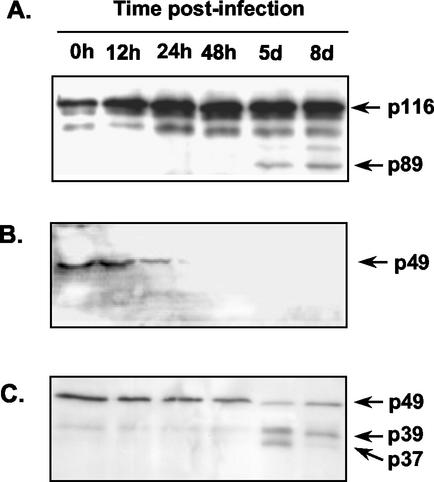FIG. 2.
T. gondii induces degradation of PARP and cleavage of Casp-8 and Casp-9. At the indicated times following i.p. injection of 103 strain RH tachyzoites into C57BL/6J mice (WT), spleens were collected, cells were lysed, and lysates were subjected to SDS-PAGE and Western blot analysis. (A) The presence of caspase-cleaved PARP was detected with an Ab recognizing both the full-length enzyme and its cleaved fragment. The full-length (p116) and cleaved (p89) PARP molecules are indicated by arrows. (B) An Ab directed against the pro-Casp-8 peptide detects a band that decreases in intensity by 24 h postinfection and falls to undetectable levels thereafter, indicative of Casp-8 activation. (C) An Ab recognizing both pro-Casp-9 (p49) and its active cleavage products shows that the pro-Casp-9 band decreases in intensity by 48 h postinfection. Two active forms of Casp-9 are found at 5 days postinfection. The upper band, p39, results from pro-Casp-9 cleavage by activated Casp-3. The lower band, p37, results from Casp-9 self-cleavage. These experiments were repeated four times with similar results.

